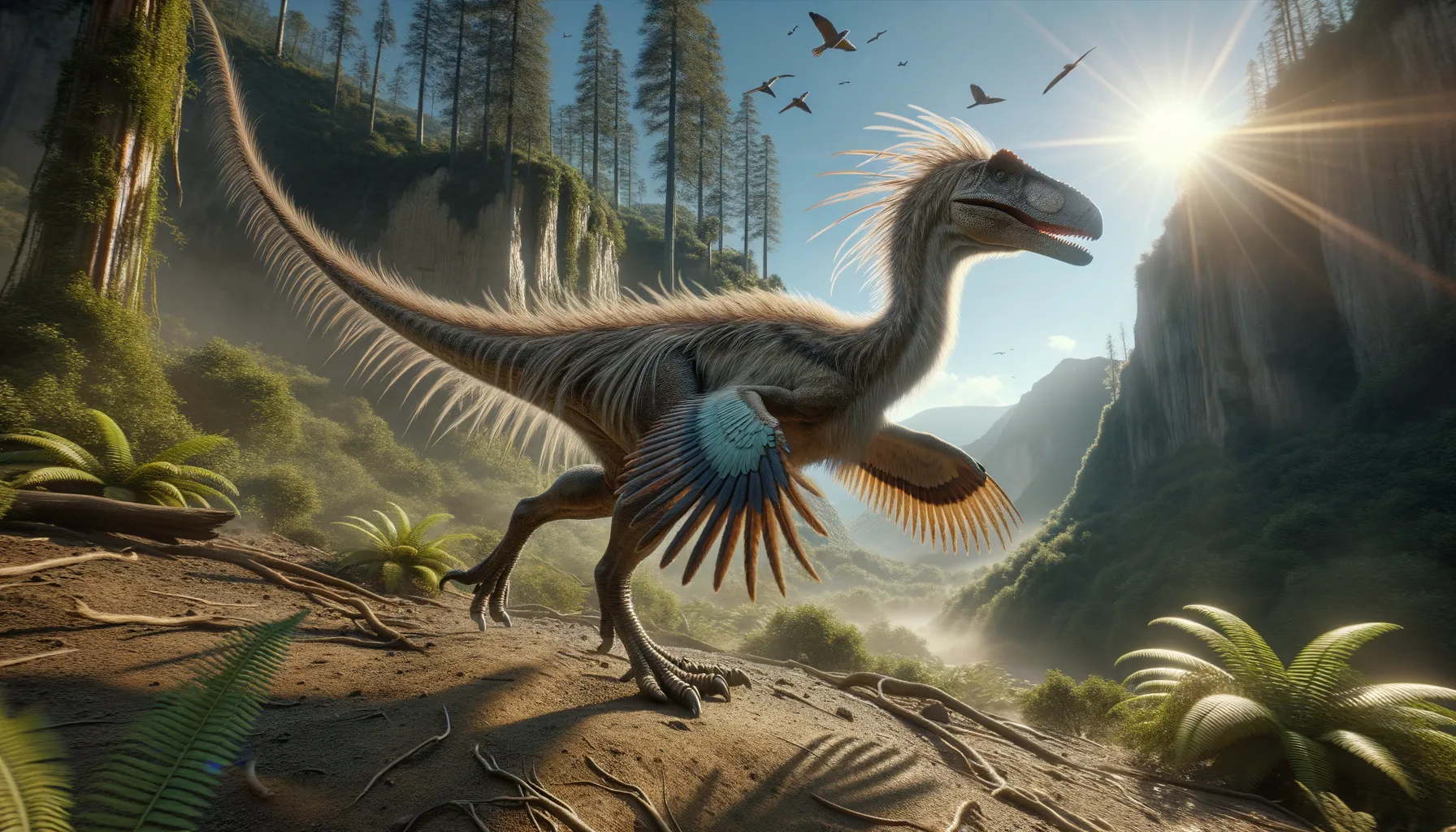
Pedopenna
A step closer to the origin of flight!
Period
Jurassic
Length
Around 1 meter in length.
Height
Roughly 30 cm tall.
Weight
Approximately 1 kg.
Pedopenna was a small, feathered theropod dinosaur that lived during the Late Jurassic period. Its discovery has provided valuable insights into the evolution of feathered dinosaurs and their link to modern birds. With its long feathers on the feet, Pedopenna might have been an early experiment in the development of flight. Its fascinating anatomy suggests it was more suited for gliding or climbing rather than active flight.
Diet
Pedopenna was likely an insectivore, feeding on small insects and invertebrates. Its small size and agile body would have helped it catch these quick-moving prey.
Hunting
It probably hunted insects by stalking and quickly darting at them using its agility. Being a small dinosaur, it might have used stealth and sharp reflexes to capture its prey.
Environmental challenges
Living in the humid forests of Jurassic China, Pedopenna would have faced challenges such as fluctuating temperatures and seasonal changes. Dense vegetation might have limited visibility, making it harder to spot prey and predators. Adaptations in feather structure could have aided in camouflage and thermoregulation, helping it survive in its lush habitat.
Speed
Pedopenna was likely agile but not very fast.
Lifespan
Estimated to be around 10 to 20 years.
First discovery
Discovered in the Daohugou Beds in northeastern China in 2005.
Fun Facts
- Pedopenna is a small dinosaur that lived during the Middle Jurassic period.
- Its name, Pedopenna, means 'foot feather' because it had feathers on its feet.
- Pedopenna is thought to be an early relative of birds, showing the transition from dinosaurs to modern birds.
- Fossils of Pedopenna were discovered in China, highlighting the region's rich prehistoric past.
- It likely weighed only about one kilogram, making it one of the smaller theropods.
- Pedopenna's feathers suggest it could glide or parachute down from heights rather than fly.
- Even though it had feathers, Pedopenna was more of a ground-dweller.
Growth and Development
Pedopenna likely grew rapidly after hatching to avoid predation. Its development included the formation of feathers, critical for its unconventional locomotion that might have included gliding. The growth stages allow insight into early theropod development patterns and their evolutionary relation to birds.
Habitat
Pedopenna inhabited the temperate forests of what is now China, surrounded by dense foliage and a diversity of plant and animal life. The environment offered plenty of insects, which would have served as its primary food source. The forested area also provided shelter from larger predators.
Interaction with other species
Pedopenna would have interacted with other small theropods and potentially early mammalian species, competing for food and resources. It might have also been prey for larger carnivorous dinosaurs, which would make effective hiding and swift movements crucial for its survival.
Natural lifespan
Its natural lifespan was likely similar to modern small birds, around 10 to 20 years.
Reproduction
Reproductive strategies might have included laying eggs in nests hidden in foliage to protect from predators. The presence of feathers could suggest some level of care post-hatching, perhaps for warmth and protection.
Social behaviour
Pedopenna could have exhibited social behaviors akin to modern birds, possibly forming small groups for safety and cooperative hunting. Although direct evidence is scarce, flocking might have improved survival rates against predators.
Fossil locations
Fossils of Pedopenna have primarily been found in the Daohugou Beds of northeastern China, a location rich with diverse Jurassic-era fossils. This area has provided critical insights into feathered theropods and their evolutionary path.
